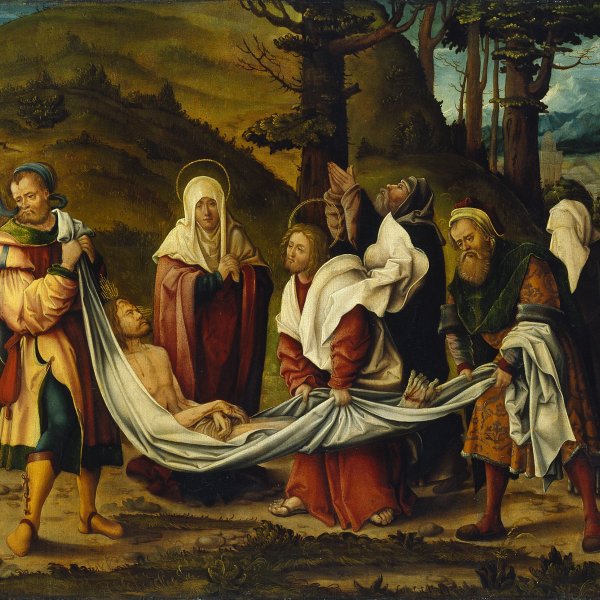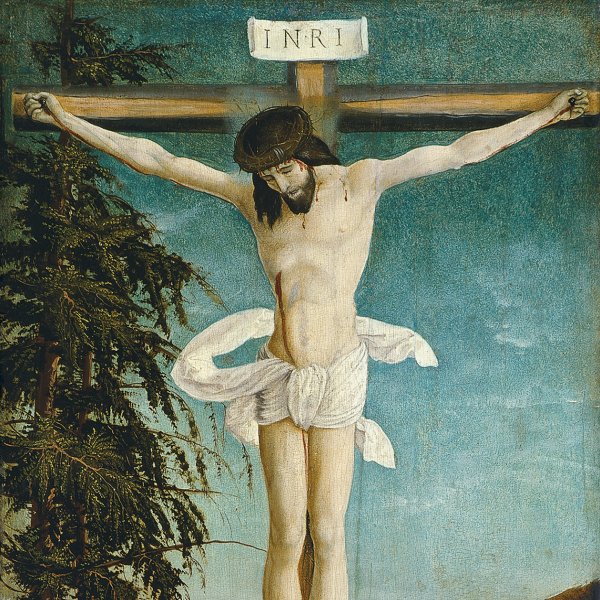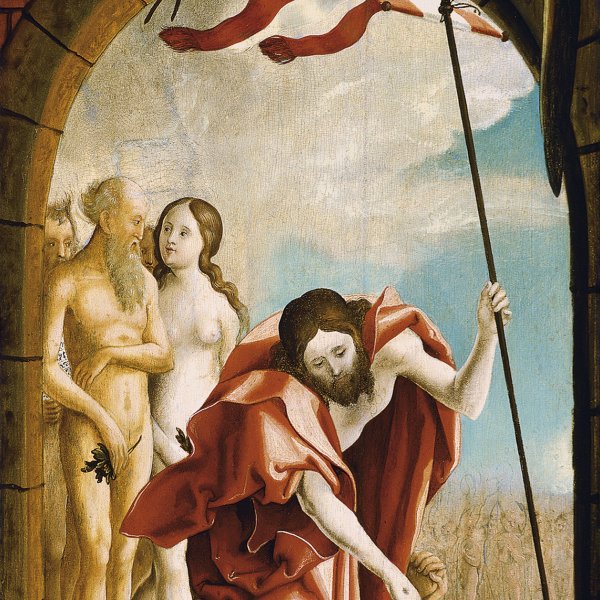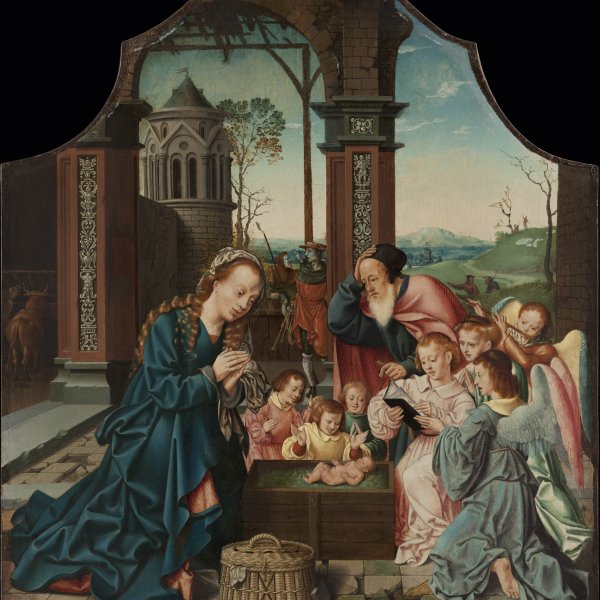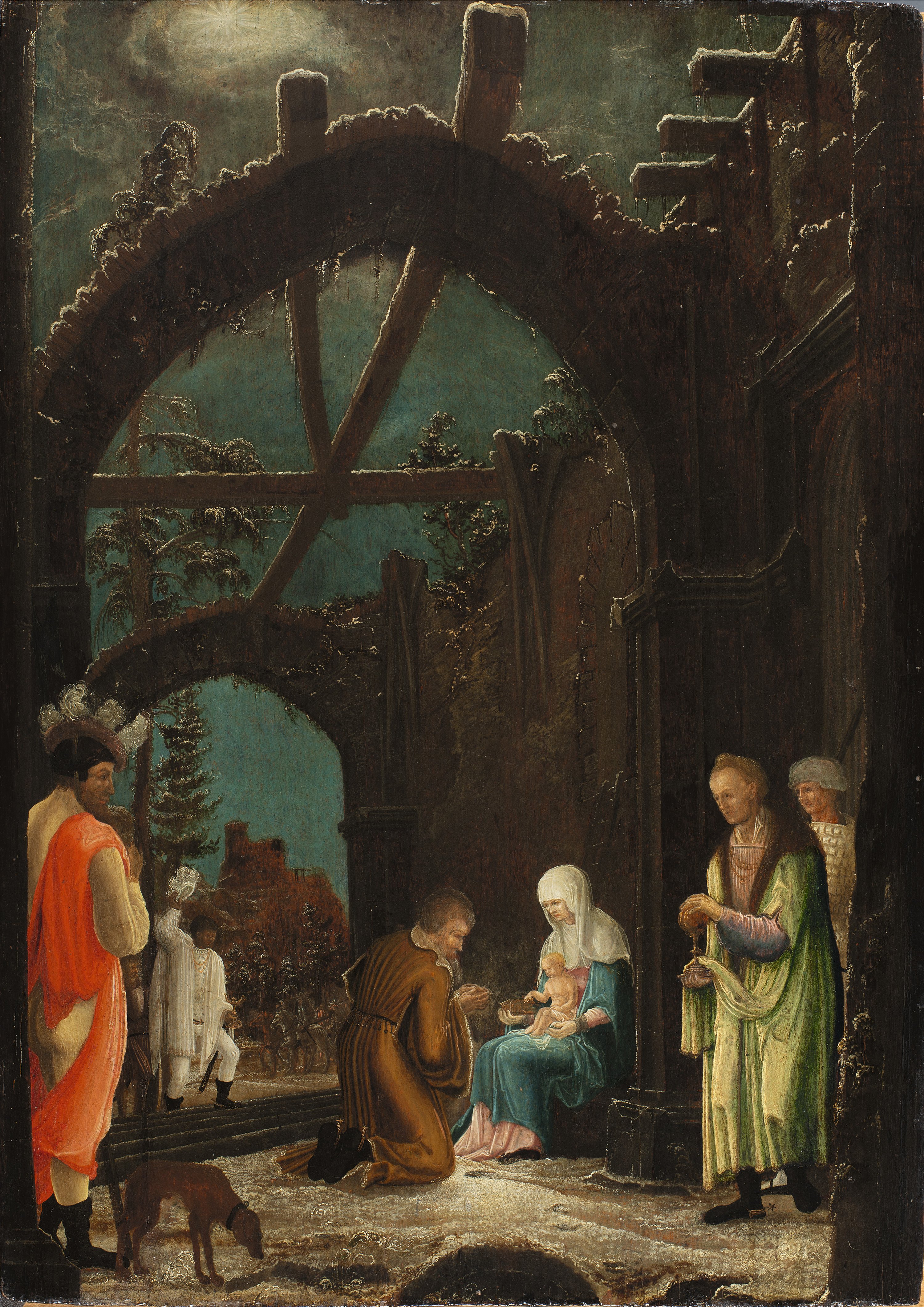The Adoration of the Magi
The Adoration of the Magi has been the subject of considerable debate regarding its attribution. In 1967 Winzinger attributed it to a painter whom he named the Master of the Lugano Adoration. In 1991 Isolde Lübbeke confirmed this suggestion, re-naming the artist the Master of the Thyssen Adoration. The painting had previously been attributed to Wolf Huber due to the presence of details inspired by two prints by that artist, The Nativity and The Adoration of the Magi. The influence of Albrecht Altdorfer is also evident in the elongated proportions of the figures. The artist located the characters in this episode from the childhood of Christ in the interior of a ruined Gothic church. The Virgin and Child are to be seen on the right with Melchior in front of them, occupying the centre of the composition and offering them a gold casket. On the far right we see Caspar, accompanied by a soldier, while Balthasar makes his entrance. On the left, the artist included a figure wearing brightly coloured clothes who functions as a spectator to the scene. The panel’s small size has led to the suggestion that it was one of the exterior wings of a portable altarpiece.
NH
Acquired in 1956, this panel was attributed to Albrecht Altdorfer when it was in the Reder Sen collection Brussels. In the 1930s Ludwig von Baldass considered it to be an early work by Wolf Huber, an attribution that was maintained in most of the Thyssen-Bornemisza catalogues until 1991. In 1967, however, Franz Winzinger assigned it to an anonymous painter whom he called the Master of the Lugano Adoration. Winzinger used this panel (which was then on display in Lugano, Switzerland) as a reference point to construct a catalogue of works by this new artist. In addition, he also brought together a group of drawings and thus reconstructed an initial oeuvre and artistic personality for this figure. In 1991 Isolde Lübbeke accepted Winzinger’s proposal, slightly modifying the name of the artist to the Master of the Thyssen Adoration.
The Adoration of the Magi is an episode from the childhood of Christ that is briefly recounted in the Gospel of Saint Matthew. The Master of the Thyssen Adoration set the episode in the ruined interior of a Gothic church, giving the scene a winter atmosphere that envelops the figures. Snow lies on the floor of the building, on the beams, the branches of the trees and the small landscape in the background. Mary and the Christ Child receive the homage of King Melchior who is still wearing his travelling boots with spurs. Mary has accepted the coffer of gold, symbol of Christ’s royalty, which the Infant touches with his small hand. On the right Caspar, accompanied by a soldier in helmet and chain mail, is about to present the incense in a chalice, while Balthasar, dressed in white, climbs the steps to join the company. On the left, and functioning as a visual counterpoint to Caspar, is another figure whose brightly coloured clothing rivals that of the three Kings.
The composition, architecture and particularly the group of the Virgin and Child are inspired by two prints by Wolf Huber from around 1510. The similarity between the present panel and the two prints, which depict The Nativity (Munich, Staatliche Graphische Sammlung) and The Adoration of the Magi (Berlin, Staatliche Museen, Kupferstichkabinett), led to the present work’s former attribution to Huber. Parallels have also been established with the work of Albrecht Altdorfer, to whom the panel was also attributed in the past. The present artist derived from Altdorfer the elongated proportions of the figures and the technique used to create the chiaroscuro.
This nocturnal, snowy Adoration with the star that guided the Kings illuminating the snow on the roof, may have formed the exterior wing of a portable triptych.
Mar Borobia

